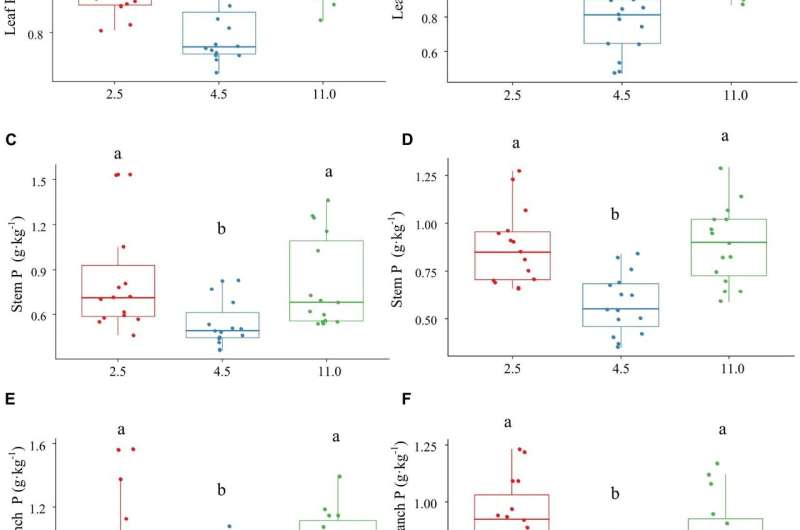Groundwater depths affect nutrient resorption of desert phreatophyte

Water and nutrients play important roles in the survival and growth of plants in arid and nutrient-poor desert ecosystems. Phreatophytes have a strong competitive advantage in arid desert ecosystems because their roots can reach deep into groundwater.
However, with the intensification of human activities, groundwater depth in many regions of the world has shown a downward trend and the impact of changing groundwater depth on the nutrient utilization strategies of phreatophyte is still poorly understood.
A research team led by Prof. Zeng Fanjiang from the State Key Laboratory of Desert and Oasis Ecology, Xinjiang Institute of Ecology and Geography (XIEG) of the Chinese Academy of Sciences, revealed that groundwater depths affect nutrient resorption but not their utilization of a desert phreatophyte, Alhagi sparsifolia.
The study was published in Frontiers in Plant Science on June 7.
The plant was grown at groundwater depths of 2.5, 4.5, and 11.0 m during 2015 and 2016 in a desert-oasis transition ecotone at the southern rim of the Taklimakan Desert in northwestern China.
The researchers found that groundwater depth significantly affected the phosphorus (P) and potassium (K) concentrations and in leaf, stem, and assimilating branch of A. sparsifolia as well as nutrient resorption efficiency (NUE) of P and K. The nitrogen (N) concentration and NUE of N, P, and K in A. sparsifolia, however, were not influenced by groundwater depth.
The study shows that groundwater depths affect P and K concentrations and resorption but not their utilization in a desert phreatophyte in its hyper-arid environment. It also provides a new insight into the phreatophytic plant nutrient cycle strategy under a changing external environment in a hyper-arid ecosystem.
More information: Bo Zhang et al, Groundwater Depths Affect Phosphorus and Potassium Resorption but Not Their Utilization in a Desert Phreatophyte in Its Hyper-Arid Environment, Frontiers in Plant Science (2021). DOI: 10.3389/fpls.2021.665168
Journal information: Frontiers in Plant Science
Provided by Chinese Academy of Sciences




















